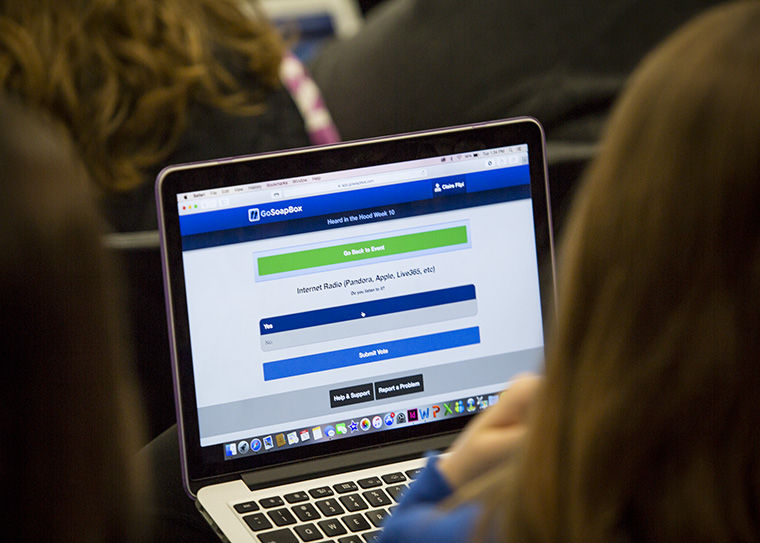Big Chicago uses technology to manage large classes
Big Chicago uses technology to manage large classes
November 30, 2015
Students and faculty are divided on the effectiveness of the new technology being used to teach the Big Chicago courses, the college’s reconceived first-semester freshman class.
To facilitate the new courses, the college invested in GoSoapBox, a product created by a Chicago-based technology company that aims to improve classes by creating opportunities for classroom participation, according to Dave Mulder, the company’s co-owner and chief product officer.
The technology allows professors to use their Internet-based account to take attendance, gauge comprehension and conduct polls, quizzes and discussion boards with their students, Mulder said. Students can answer questions prompted by the professor by signing into their class accounts using a smartphone, tablet or laptop.
Senior Associate Provost Suzanne Blum Malley said any student who does not have an Internet-accessible device can borrow resources from the college.
Blum Malley said the college invested in GoSoapBox after students tested various systems last spring. She said GoSoapBox is meant to help professors properly manage large class sizes.
“We were interested in leveraging a student response system of some sort because it’s good pedagogical practice in large lecture classes, and this is our first foray into large lecture classes,” Blum Malley said.
Big Chicago courses are currently the largest class sizes at Columbia, ranging from 45 to nearly 200 students per class, Blum Malley said. She added that the college bought individual GoSoapBox accounts for the 14 Big Chicago professors.
Prices for accounts, which Mulder said expire after one semester, in effect, unless renewed, vary depending on the number of students it serves per professor. He added that accounts for professors with up to 75 students cost $99, up to 150 students cost $179 and up to 400 students cost $279.
“It was at a price point where we could do it and test it out to see how it worked without committing to a long-term contract or lots of money,” Blum Malley said.
Blum Malley said all Big Chicago faculty and teacher’s assistants received training on how to incorporate the technology into their courses.
Dominic Pacyga, a professor in the History, Humanities & Social Sciences Department and a Big Chicago professor, said he used the technology for two weeks before abandoning it.
Pacyga said it was difficult to use the system to take attendance because of problems with the college’s Internet connection and the technology itself.
“It [would take] about 20 minutes,” he said. “Often students didn’t know what they were doing, and they didn’t register properly. It was a mess.”
Lucia Frisancho, a freshman theatre major who participates in “Heard in the Hood: Social Media Storytelling in Chicago’s Neighborhoods,” said there were issues during the beginning of the semester trying to get the technology to cooperate.
“There were times a student couldn’t log into the event, and it would be locked or the polls especially were hard to figure out,” Frisancho said. “Sometimes we couldn’t submit answers or the answers would be repeated, and we didn’t know which ones we were supposed to pick. I felt like it ended up taking more time than it needed [to].”
Blum Malley said she has not heard any complaints about the technology, but she welcomes them to help evaluate the system. She said her Strategic Plan implementation committee will discuss GoSoapBox when evaluating the effectiveness of the courses.
Frisancho said GoSoapBox helps engage students when the system works properly.
“Usually, the polls are relevant to what we are talking about and help make it more personal,” she said. “It does accomplish that.”
Alton Miller, an associate professor in the Communication & Media Innovation Department and a Big Chicago professor, said he has not had problems with
the technology.
“It makes the interaction between student and teacher richer with activities [and] interactive responses to questions I’m asking,” Miller said.
While the technology is currently limited to Big Chicago, Blum Malley said it could possibly be used in other
Columbia classes.
“I think it could be used in smaller classes,” Blum Malley said. “It might be more awkward to use in smaller classrooms, I don’t know, but I think it very much depends on how well the faculty is prepared to use it and how interested they are in using [it] and how well they use it to further the learning environment—not just using it to use it.”








